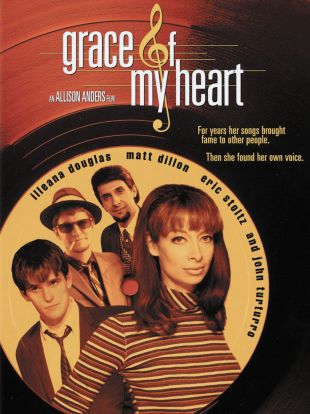
Coming on the heels of her universally trashed segment of Four Rooms, Grace of My Heart was writer/director Allison Anders' ambitious attempt to capture several different eras in American popular music. The film dramatizes the life of a frustrated singer/songwriter, Edna Buxton (Illeana Douglas), who longs to sing her own songs, but instead develops a successful career as a songwriter for hire. While it covers much of the same time period and is similar in subject matter to What's Love Got to Do With It?, the Tina Turner biopic released a few years earlier, Grace of My Heart is a much more low-key and intimate film. Because Edna is a sane and likeable, but passive young woman, who gradually grows to find her voice, she is frequently overshadowed by the more flamboyant and eccentric male characters, including Eric Stoltz's charming but hypocritical beatnik; Matt Dillon's cuddly and brilliant, but schizophrenic surfer boy; and John Turturro's nerdy and irritating, but stalwart manager. Douglas is very engaging in this challenging role (her first lead), and the men in the cast play deftly off her steadfastness. The film is episodic and lags occasionally, but Anders captures the spirit of each era and musical style Edna passes through with exemplary wit and economy. She is aided in this by the wonderfully evocative work of her musical collaborators, including her longtime friend and contributor J. Mascis, as well as Joni Mitchell, Elvis Costello, and Burt Bacharach. After making this film, Anders tried to make a biopic about Paul McCartney, which never got off the ground. She continued making films about the music business, with Sugar Town and Things Behind the Sun, but eventually returned to a smaller-scale, more personal style of filmmaking.
